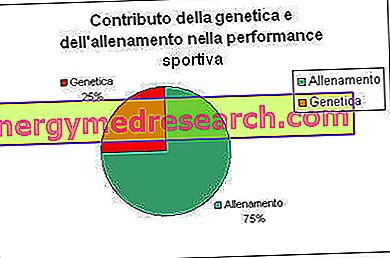Generality
Pulmonary hypertension is a pathological condition in which the blood pressure inside the pulmonary arteries and the right cavities of the heart is high.

Figure: Comparison section between the pulmonary arteries of a healthy subject and the pulmonary arteries of a subject with pulmonary hypertension. From www.cdc.gov
Very often, this serious condition is linked to a deterioration of the wall that constitutes the pulmonary arteries (or their ramifications): following this alteration, in fact, the arteries themselves shrink and the blood flow inside them is reduced.
The main symptoms of pulmonary hypertension are dyspnoea, chest pain, fainting and tachycardia.
To diagnose this condition correctly, several diagnostic tests are needed, also necessary to trace the causes.
Therapy may be pharmacological or, if the drugs have poor results, surgical.
A brief reference to the anatomy of the heart
Before describing pulmonary hypertension, it is useful to retrace some fundamental characteristics of the heart.
With the help of the image, readers are reminded that:
- The heart is divided into two halves, right and left. The right heart is composed of the right atrium and the right ventricle below. The left heart is composed of the left atrium and the left ventricle below. Each atrium is connected to the underlying ventricle by means of a valve .
- The right atrium receives non-oxygenated blood through the cavities .
- The right ventricle pumps blood into the pulmonary arteries, which lead to the lungs. In the lungs, the blood is charged with oxygen.
- The left atrium receives oxygenated blood, returning from the lungs, through the pulmonary veins .
- The left ventricle pumps oxygenated blood to the organs and tissues of the human body, through the aorta .
- Each ventricle communicates with its efferent vessel by means of a valve. Therefore, there are four heart valves in all.

What is pulmonary hypertension?
Pulmonary hypertension is a serious pathological condition, characterized by a prolonged rise in blood pressure inside the pulmonary arteries (or one of their branches) and inside the right cavities of the heart.
People with pulmonary hypertension find it difficult to withstand even mild physical exertion and are particularly predisposed to suffering from heart failure (or heart failure ).
Epidemiology
According to statistical research, in the United Kingdom about 4, 000-5, 000 people suffer from pulmonary hypertension.
Causes
In most cases, pulmonary hypertension is established when the walls of the pulmonary arteries undergo an alteration, due to which they shrink or become completely blocked. This has two consequences: on the one hand it increases the resistance that the blood meets going from the heart to the lungs and on the other hand the pumping action of the right ventricle is hindered.
In other words, at the origin of pulmonary hypertension there is almost always a vasoconstriction of the arteries that lead the blood from the heart to the lungs; such vasoconstriction reduces direct blood flow to the lungs and prevents the right ventricle from functioning normally.
Since the causes capable of modifying the structure of the pulmonary arteries are numerous, doctors have decided to distinguish pulmonary hypertension in 5 categories:
- Group I - Pulmonary arterial hypertension . It is further subdivided into the following sub-categories:
- Idiopathic pulmonary hypertension
- Hereditary pulmonary hypertension
- Pulmonary hypertension induced by drugs or toxic substances
- Persistent pulmonary hypertension of the newborn
- Pulmonary hypertension associated with other morbid conditions, including: portal hypertension, HIV infection, connective tissue diseases, etc.
- Group II - Pulmonary hypertension due to dysfunctions of the left heart . The main dysfunctions affect the left ventricle and the mitral and aortic valves.
- Group III - Pulmonary hypertension due to pulmonary dysfunction and hypoxia . The following morbid states or situations are responsible for this type of pulmonary hypertension:
- Chronic obstructive pulmonary disease (COPD)
- Pulmonary interstitial disease
- Sleep apnea syndrome
- High altitude (above 2400-2500 meters)
- Alveolar hypoventilation
- Group IV - Pulmonary hypertension linked to chronic thromboembolism . Thromboembolism is a disease characterized by the tendency to the formation of blood clots attached to the wall of blood vessels (thrombi), which can break off and enter the bloodstream (emboli).
- Group V - Pulmonary hypertension due to other causes . Various diseases are responsible for this form of pulmonary hypertension, including:
- Myeloproliferative disorders
- Sarcoidosis
- Neurofibromatosis
- Vasculitis
- Histiocytosis X
- Gaucher disease
- Thyroid disorders
- Chronic renal failure
- Compressive tumor masses
GROUP 1
The pulmonary hypertensions of group 1 are accumulated by causing a process of vasoconstriction of the blood-carrying vessels from the right ventricle to the lungs.
Idiopathic pulmonary hypertension . In medicine, a disease is defined as idiopathic when it arises without an identifiable reason.
Idiopathic pulmonary hypertension is very rare (NB: the annual incidence is 2 cases per million people) and mainly affects women.
Hereditary pulmonary hypertension . In some subjects, pulmonary hypertension is caused by a genetic mutation transmitted by parents. In these cases, the pathology is considered to all intents and purposes a hereditary disease.
Pulmonary hypertension induced by drugs and toxic substances . Some substances capable of involving pulmonary hypertension are fenfluramine and amphetamines.
Persistent pulmonary hypertension of the newborn . According to statistical research, about 2 infants per 1, 000 suffer from pulmonary hypertension. The latter is usually linked to morbid states or poor health conditions, such as:
- Septicemia
- Hypoglycemia
- Severe pulmonary hypoplasia
- Meconium aspiration syndrome
Pulmonary hypertension associated with other morbid states . Some of the main morbid states that can accompany pulmonary hypertension are:
- Connective tissue diseases, such as scleroderma, systemic lupus erythematosus or rheumatoid arthritis. According to some statistical research, pulmonary hypertension is found in 21% of cases of rheumatoid arthritis and in 4-14% of cases of systemic lupus erythematosus (NB: for scleroderma, the data is not very precise).
- Congenital malformations of the heart.
- Portal hypertension. It is a pathological condition whereby the pressure, inside the vein carries the liver, rises above normal. Pulmonary hypertension occurs in 2-5% of people with portal hypertension.
- HIV infections.
- Disorders of the thyroid gland.
- Chronic hemolytic anemia (NB: among the variants of this type of disease there is also sickle cell anemia).
- Pulmonary veno-occlusive disease.
- Pulmonary capillary hemangiomatosis.
GROUP 2
Pulmonary hypertension due to dysfunctions of the left heart is a special case. It is in fact the only one that does not arise due to the vasoconstriction of the pulmonary arteries, but due to a problem with one of the supporting structures of the left heart (atrium, ventricle, mitral valve or aortic valve).
About 60% of people with a left ventricular dysfunction and about 2/3 of those with a severe aortic valve defect also suffer from pulmonary hypertension.
GROUP 3
In group 3 pulmonary hypertension, vasoconstriction and other pulmonary artery alterations are due to reduced blood oxygen levels ( hypoxia ). This reduction is often the result of a disease that affects breathing (such as COPD or sleep apnea syndrome).
GROUP 4
In pulmonary hypertensions caused by the presence of blood clots (thrombi or emboli), the narrowing of the vessel wall occurs because the clots release substances that specifically cause vasoconstriction.
The presence of an embolus in the pulmonary arteries is a condition known as pulmonary embolism . Two out of 100 people suffering from pulmonary embolism also suffer from pulmonary hypertension.
GROUP 5
The vasoconstriction of the pulmonary arteries appears due to a still unclear pathogenic mechanism. However, the potential triggering diseases are fairly well known.
Continue: Pulmonary Hypertension - Symptoms, Diagnosis, Therapy »



